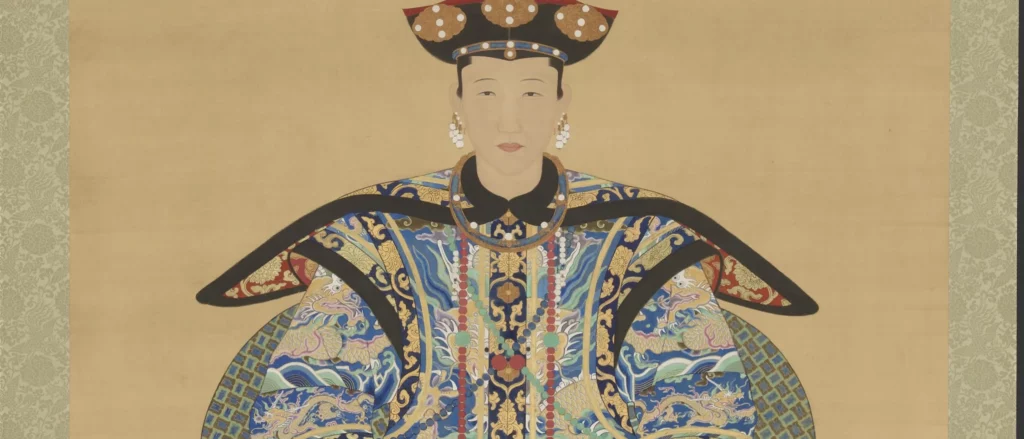
China, a global economic powerhouse, boasts a rich history dating back thousands of years. Yet, a pivotal moment in that history—the collapse of the Qing Dynasty in 1912— has always been difficult to interpret for historians. A new study has put this historic event once again in the spotlight, untangling the forces that dismantled China’s last imperial stronghold but also offering a cautionary tale for contemporary China and beyond.
The Rise and Fall of the Mighty Qing
It’s no denying that China’s economy has grown tremendously in the past few decades. By purchasing power parity, China is by far the world’s most powerful economy, although the US still takes the top spot in terms of nominal GDP. But China used to be even powerful economically.
In 1820 at the height of the Qing, China was responsible for a staggering 32.9% of the world’s GDP, whereas the fledgling USA (which was just starting out as a country), was responsible for just 2% of world GDP.
The Qing Dynasty emerged after a period of political turmoil and foreign invasions. Its foundation marked the end of the Ming Dynasty’s rule and brought a semblance of order and stability back to China. The Qing rulers effectively unified the country, offering respite from years of chaos.

One of the Qing Dynasty’s most significant contributions was its embrace of cultural diversity. Originating from Manchuria, the rulers of the Qing Dynasty adopted and integrated Chinese culture into their governance. This cultural fusion enriched China’s heritage, creating a unique blend that persists to this day.
During the Qing Dynasty, China experienced periods of remarkable prosperity, particularly under the rule of Emperor Qianlong. Economic growth, advancements in agriculture, and a flourishing arts scene characterized this era, solidifying China’s status as a global power — but it wasn’t all milk and honey.
Over generations, Qing China went through a rollercoaster of decline and resurgence. In 1912, after over two centuries in power, the Qing Dynasty, though considerably wealthier than modern China, crumbled. During the unfolding revolution, more than 2,000 years of imperial rule came to an abrupt and bitter end, making way for the short-lasting Republic of China. This stark contrast reminds us that economic prowess alone cannot guarantee stability.
“It’s crucial to comprehend the origins of such instabilities. Assuming it’s a thing of the past and can’t recur would be a mistake. Such changes can indeed happen because the underlying mechanisms bear surprising similarities,” cautions Peter Turchin, a researcher at the Complexity Science Hub in Vienna.
For centuries, scientists have grappled with uncovering the Qing Dynasty’s downfall. Environmental disasters, foreign invasions, famines, and uprisings were all previously considered culprits. Yet, none offered a comprehensive explanation.
In their new study, Turchin and colleagues have identified three surprising key elements that could have fueled the socio-political collapse of the once mighty Qing Dynasty.
- Population Explosion: Between 1700 and 1840, China’s population quadrupled, leading to decreased land per capita and increased rural impoverishment.
- Elite Competition: As more individuals vied for prestigious positions, the number of awarded academic degrees declined, creating a pool of frustrated elite aspirants. This mismatch stirred the pot, with many disgruntled would-be elites participating in the bloodiest civil war in human history—the Taiping Rebellion.
- Financial Burden: The state’s financial burden grew due to the costs of suppressing unrest, declining productivity, and trade deficits due to depleting silver reserves and opium imports.
Together, these factors ignited a series of uprisings that marked the Qing Dynasty’s demise and the loss of countless Chinese lives.
Contrary to previous assumptions, social tensions peaked between 1840 and 1890 and didn’t escape the Qing rulers’ notice. This underscores the dynasty’s institutional robustness. Yet, their solutions often proved shortsighted, exacerbating the brewing tensions.
“Assuming that the Qing rulers were unaware of this mounting pressure would be erroneous,” explains Turchin.
Lessons for Today and Tomorrow
The Qing Dynasty’s historical demise offers poignant lessons that may still be valuable today. Many nations grapple with potential instability akin to Qing’s era, where competition for top positions remains fierce. It’s thus essential for political decision-makers to recognize these warning signs and develop long-term strategies to mitigate social pressures.
Georg Orlandi, the study’s first author, cautions, “When a large number of individuals vie for a limited number of positions, political decision-makers should view this as a red flag, as it can, at the very least, lead to heightened instability.”
Co-author Daniel Hoyer, an affiliated researcher at CSH, adds, “Without long-term vision and targeted strategies to relieve these social pressures, many places are at risk of going the way of the Qing.”
The findings appeared in the journal PLOS ONE.


